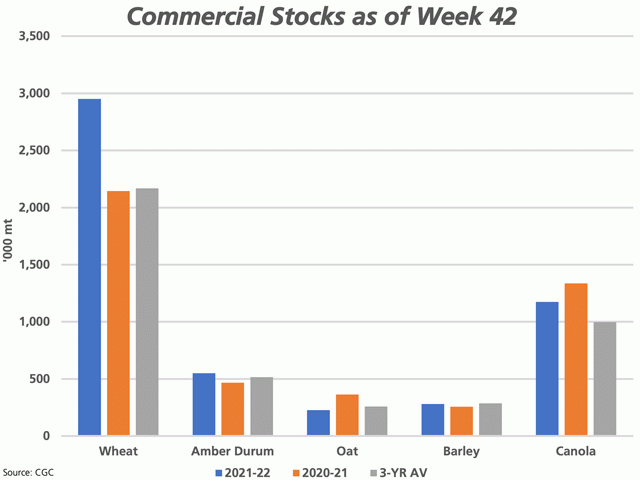Canada Markets
Alberta Crop Report as of May 24
As of May 24, Alberta Agriculture estimates 73.4% of the province's major crops were planted in this week's abbreviated Crop Report, up from 45.8% reported in the week prior and close to the 77.3% five-year average. The larger gains were made as you move from south to north in the province, with the South Region advancing by 14 percentage points to 88.4% complete, the Central Region by 26.6 points to 85.6%, the North East by 36.6 points to 78.1%, the North West by 29 points to 54.4% and the Peace Region by 34.2 points to 36.6% complete, made possible by drier conditions in the north.
By crop, 82.9% of the spring wheat (87%), 72.7% of the barley (76.8%), 46.9% of the oats (58%), 64% of the canola (73.5%) and 85.2% of the dry peas (92.5%) have been seeded, with the three-year average in brackets. While the pace of planting is well behind the pace of planting achieved in 2021 for the five crops reported this week, the current pace for these crops ranges from 1.9% behind the 2020 pace for spring wheat to 10.2% behind the 2020 pace for canola, with 79.6% of all crops planted as of May 26, 2020.
P[L1] D[0x0] M[300x250] OOP[F] ADUNIT[] T[]
Across the province's five regions, seeding progress reported for the South, the Central and the Northeast regions are either ahead of their respective average pace for this week, or close to it. The pace of planting in the North West Region is 13 percentage points behind the average pace for the region, while the Peace Region is 26.5 points behind average, although the spread has narrowed by 3 points in the North West and by 12.4 points for the Peace Region during the week.
Crop emergence across the province ranges from 47% in the South Region to just 2% in the northern Peace Region. While well behind the pace estimated for this week in 2021, these estimates are very much on track with the emergence estimates for 2020. Emergence estimates for the Central Region and the South Region are ahead of their respective three-year average. The current emergence estimates are ahead of the estimated pace of crop emergence in 2019 for four of the five regions, excluding the northern Peace Region, where the current emergence is just 5 percentage points behind the 2019 estimates for this week.
Surface soil moisture ratings saw an overall improvement for the province noted, with the Good-to-Excellent rating increasing by 8 percentage points overall to 48 G/E, while the Fair-to-Poor rating fell by 7 points to 52 points. This remains below average, with the five-year average reported at 73.4% G/E and 22.3% F/P.
Surface Soil moisture ratings for the province as of May 24 improved in four of the five regions of the province, while showing hints of deterioration in the North West Region. According to reported data, there was roughly a 10-point swing from F/P to G/E in the South, Central and North East regions. Of concern remains the Southern Region at 19.8% G/E surface soil moisture and 80.2% F/P, as estimated after the recent week's improvement. The North West Region showed little change during the week; the G/E rating for the Peace Region remained steady while there was a 7-point shift from Excessive surface soil moisture to F/P.
Cliff Jamieson can be reached at cliff.jamieson@dtn.com
Follow him on Twitter @Cliff Jamieson
(c) Copyright 2022 DTN, LLC. All rights reserved.






Comments
To comment, please Log In or Join our Community .